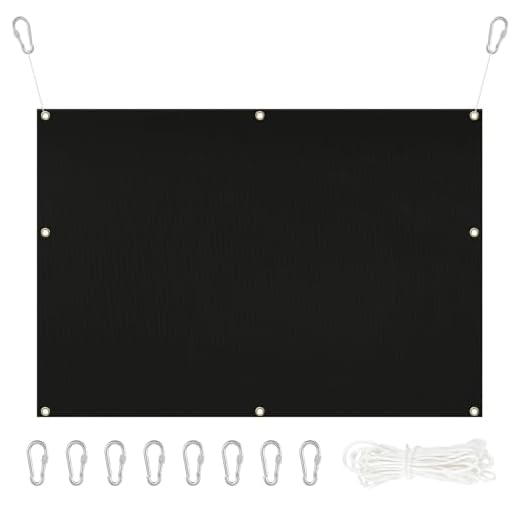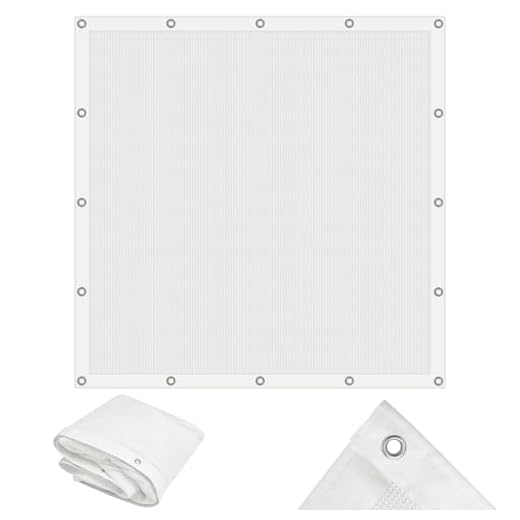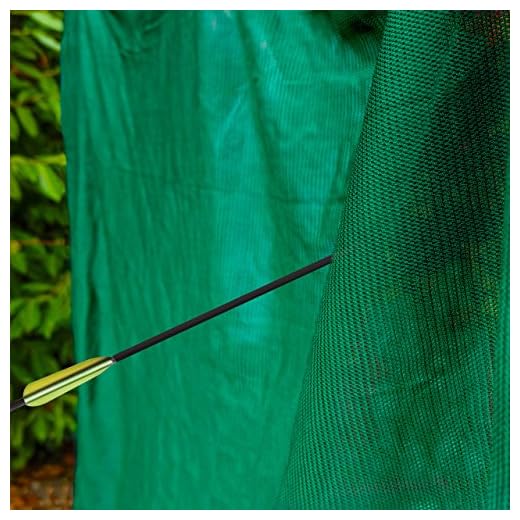




Archery netting is a popular choice for creating a safe environment for archery enthusiasts, but can it also be effective for throwing axes?
Throwing axes has gained significant popularity in recent years, with more and more people enjoying this exhilarating and challenging activity. However, safety is paramount when it comes to throwing axes, as accidents can happen if proper precautions are not taken.
So, the question remains: can archery netting provide the same level of safety for throwing axes as it does for archery?
Archery netting is specifically designed to stop arrows in their tracks, using materials that are capable of absorbing and dispersing the kinetic energy. It is a carefully constructed barrier, ensuring that arrows do not pass through and cause harm to people or property.
Is Archery Netting Effective for Throwing Axes?
Throwing axes is a popular recreational activity that requires a safe and controlled environment. One way to ensure the safety of participants and nearby spectators is by using archery netting. Archery netting is designed to stop arrows from penetrating through and can also be effective for throwing axes.
When choosing archery netting for throwing axes, it is important to consider the material and quality of the netting. The netting should be made from a durable and strong material, such as high-density polyethylene, to withstand the impact of the axes. It should also have a high mesh count to prevent the axes from slipping through the holes.
In addition to the material and quality, the height and width of the netting should also be considered. The netting should be tall enough to catch the axes and wide enough to cover the entire target area. This will help prevent any errant throws from going outside of the designated throwing area.
Benefits of Using Archery Netting for Throwing Axes
Using archery netting for throwing axes offers several benefits. Firstly, it provides a physical barrier between the thrower and the spectators, reducing the risk of injury from stray axes. The netting also helps to contain the axes within the designated throwing area, maintaining a safe and controlled environment.
Furthermore, archery netting can help protect the axes themselves. By stopping the axes upon impact, the netting helps to prevent them from hitting the ground or other hard surfaces, which can cause damage. This prolongs the lifespan of the axes and saves on replacement costs.
Care and Maintenance of Archery Netting
To ensure the effectiveness of archery netting for throwing axes, regular care and maintenance are necessary. Inspect the netting regularly for any signs of wear or tear, such as frayed edges or holes, and replace any damaged sections. Clean the netting as needed to remove dirt and debris that may affect its performance.
Overall, archery netting can be an effective solution for throwing axes, providing a safe and controlled environment for participants and spectators alike. By considering the material, quality, and size of the netting, as well as properly caring for and maintaining it, you can ensure its effectiveness and maximize its lifespan.
Benefits of Using Archery Netting for Throwing Axes
When it comes to throwing axes, using archery netting can offer several benefits that make it an ideal choice for safety and convenience.
1. Safety
The primary benefit of using archery netting for throwing axes is enhanced safety. A high-quality netting system is designed to stop the axe, reducing the risk of injury or damage to people or property in the surrounding area. The netting acts as a barrier, preventing the axe from traveling beyond the designated throwing area.
2. Durability
Archery netting is specially designed with durability in mind. It is made from sturdy materials that can withstand repeated impact from axes. The netting is resistant to tearing and fraying, ensuring that it can withstand the force of the axes without compromising its effectiveness. This durability makes archery netting a long-lasting and cost-effective choice.
3. Ease of Installation
Another advantage of archery netting is its ease of installation. Most netting systems come with all the necessary hardware and instructions for quick and simple setup. The netting can be easily attached to existing structures or freestanding frames, allowing for flexibility in the placement and configuration of the throwing area.
4. Portability
Many archery netting systems are designed to be portable, meaning they can be easily disassembled, transported, and reassembled as needed. This portability is particularly useful for those who want to use the netting for throwing axe competitions or events held in different locations. The lightweight yet sturdy design of the netting makes it easy to transport without compromising its effectiveness.
5. Versatility
Archery netting is not only suitable for throwing axes but can also be used for other similar activities such as knife throwing or archery. This versatility makes it a useful investment for those interested in multiple target sports, as the netting can be repurposed for different activities without the need for additional equipment.
Overall, archery netting is a practical and beneficial choice for throwing axes. Its safety features, durability, ease of installation, portability, and versatility make it an excellent investment for both beginners and experienced throwers.
How Archery Netting Enhances Safety
When it comes to practicing any type of shooting sport, safety should always be a top priority. In the case of archery, having proper safety measures in place is crucial for preventing injuries and accidents.
Archery netting plays a vital role in enhancing safety during archery practice sessions. Here are a few reasons why archery netting is essential:
1. Containment
Archery netting provides a secure containment system, helping to keep arrows within the designated shooting area. This prevents arrows from straying off course and potentially causing harm to nearby individuals or property. By setting up a strong and reliable netting system, you can create a safe environment for both the archers and those around them.
2. Arrow Capture
Archery netting is designed to capture arrows safely, preventing them from rebounding or ricocheting. This greatly reduces the risk of accidental injuries, as arrows are effectively stopped upon impact with the netting. An arrow that hits a netting system will minimize the force it would exert on contact with other objects, reducing the likelihood of injury.
Moreover, the netting material used in archery netting is specifically engineered to withstand the force of arrows without tearing or breaking. This durability ensures that the netting remains intact and continues to provide effective arrow capture for extended periods.
In conclusion, archery netting is a crucial safety component for archery practice sessions. It not only contains arrows within a designated shooting area, but also captures them safely to prevent dangerous rebounds. By incorporating archery netting into your setup, you can create a safer and more secure environment for archers and bystanders alike.
Factors to Consider When Choosing Archery Netting for Throwing Axes
When it comes to practicing throwing axes, using archery netting can be a great option for safety and convenience. However, not all archery netting is suitable for this purpose. Before making a purchase, there are several factors to consider to ensure that you choose the right netting for throwing axes.
1. Material
One of the most important aspects to consider is the material of the archery netting. It should be made of high-quality, durable materials that can withstand the impact of a throwing axe. Ideally, the netting should be constructed from strong synthetic fibers that can resist tears and damage. Nets made from nylon or polypropylene are commonly used for this purpose.
2. Mesh Size
The size of the mesh is another crucial factor to consider. The mesh should be small enough to prevent a thrown axe from passing through, while still allowing enough airflow for easy retrieval of the axes. A mesh size of around 1 inch to 2 inches is typically recommended for throwing axes.
3. Strength and Durability
When choosing archery netting for throwing axes, it is important to select a product that is strong and durable. Look for netting that has been specifically designed to handle heavy impacts, such as netting with reinforced edges or double-stitched seams. This will ensure that the netting can withstand the force of a thrown axe without tearing or breaking.
4. Size and Installation
Consider the size and installation requirements of the archery netting. Measure the area where you plan to set up the netting and choose a size that provides sufficient coverage. Additionally, look for netting that is easy to install and comes with all the necessary hardware, such as hooks, ropes, or clips.
5. Reviews and Recommendations
Lastly, before making a final decision, take the time to read reviews and recommendations from other users. Their experiences can provide valuable insights into the quality and performance of different archery netting options. Look for netting that has positive feedback regarding its suitability for throwing axes.
By considering these factors, you can choose the right archery netting for throwing axes that meets your safety, durability, and practicality needs. Remember to prioritize quality and suitability over cost, as investing in high-quality netting will ensure a safer and more enjoyable throwing axe experience.
Tips for Installing Archery Netting for Throwing Axes
If you are planning to set up archery netting for throwing axes, it is crucial to ensure proper installation for safety and efficiency. Here are some helpful tips to guide you through the process:
- Choose the right netting: Select high-quality archery netting that is specifically designed for stopping arrows and projectiles. It should have a high density and be made from durable materials to withstand the force of thrown axes.
- Measure the area: Determine the dimensions of the space where you plan to install the netting. Take accurate measurements to ensure that the netting fully covers the intended target area and provides adequate protection.
- Clear the surroundings: Before installing the netting, clear the area of any obstacles or potential hazards that may interfere with the throwing process. This includes furniture, equipment, or any items that could obstruct the trajectory of the thrown axes.
- Secure the netting: Use sturdy anchors and support structures to secure the netting in place. Wall mounts, steel frames or posts can provide stability and prevent the netting from sagging or falling. Ensure that the netting is taut and properly tensioned to effectively stop the axes.
- Consider backstop options: If you anticipate any possibility of axes missing the netting, it is advisable to install a secondary backstop as an additional safety measure. This could be heavyweight tarpaulin or another layer of netting that can stop the axes from causing damage or injury.
- Regular maintenance: Inspect the netting regularly for any signs of wear or damage. Replace damaged sections promptly to maintain the effectiveness and safety of the netting. Additionally, ensure that the netting is kept clean and free from debris that could interfere with its performance.
- Establish safety rules: Clearly communicate and enforce safety rules for anyone using the throwing axes and the archery netting. This includes maintaining a safe distance, using proper throwing techniques, and wearing appropriate protective gear such as safety glasses or helmets.
By following these tips, you can install archery netting for throwing axes safely and efficiently, providing a controlled and enjoyable experience for everyone involved.
Other Uses of Archery Netting Beyond Throwing Axes
While archery netting is often associated with the sport of archery or as a safety measure for throwing axes, it has a variety of other applications as well.
One of the key uses of archery netting is in golf driving ranges. It is commonly used to prevent golf balls from hitting surrounding areas or people. The netting is strong enough to stop high-speed golf balls and prevent them from causing damage or injury.
In addition to golf ranges, archery netting is also used in baseball and softball batting cages. It acts as a barrier, stopping balls from leaving the designated area and protecting surrounding property or spectators.
Another important application of archery netting is in wildlife control. It can be used as a fence or barrier to keep animals away from certain areas, such as gardens or crops. The strong and durable netting helps prevent animals from entering or causing damage to valuable vegetation.
Archery netting is also utilized in construction sites. It serves as a safety measure, preventing debris or falling objects from leaving the site and potentially causing harm to workers or passersby.
Furthermore, archery netting is sometimes used in scenic or theatrical productions as a backdrop or as a way to create a visual separation between different areas of the stage.
Overall, archery netting has a wide range of uses beyond just throwing axes. Its versatility, strength, and durability make it an ideal choice for various applications where safety, containment, and protection are required.








